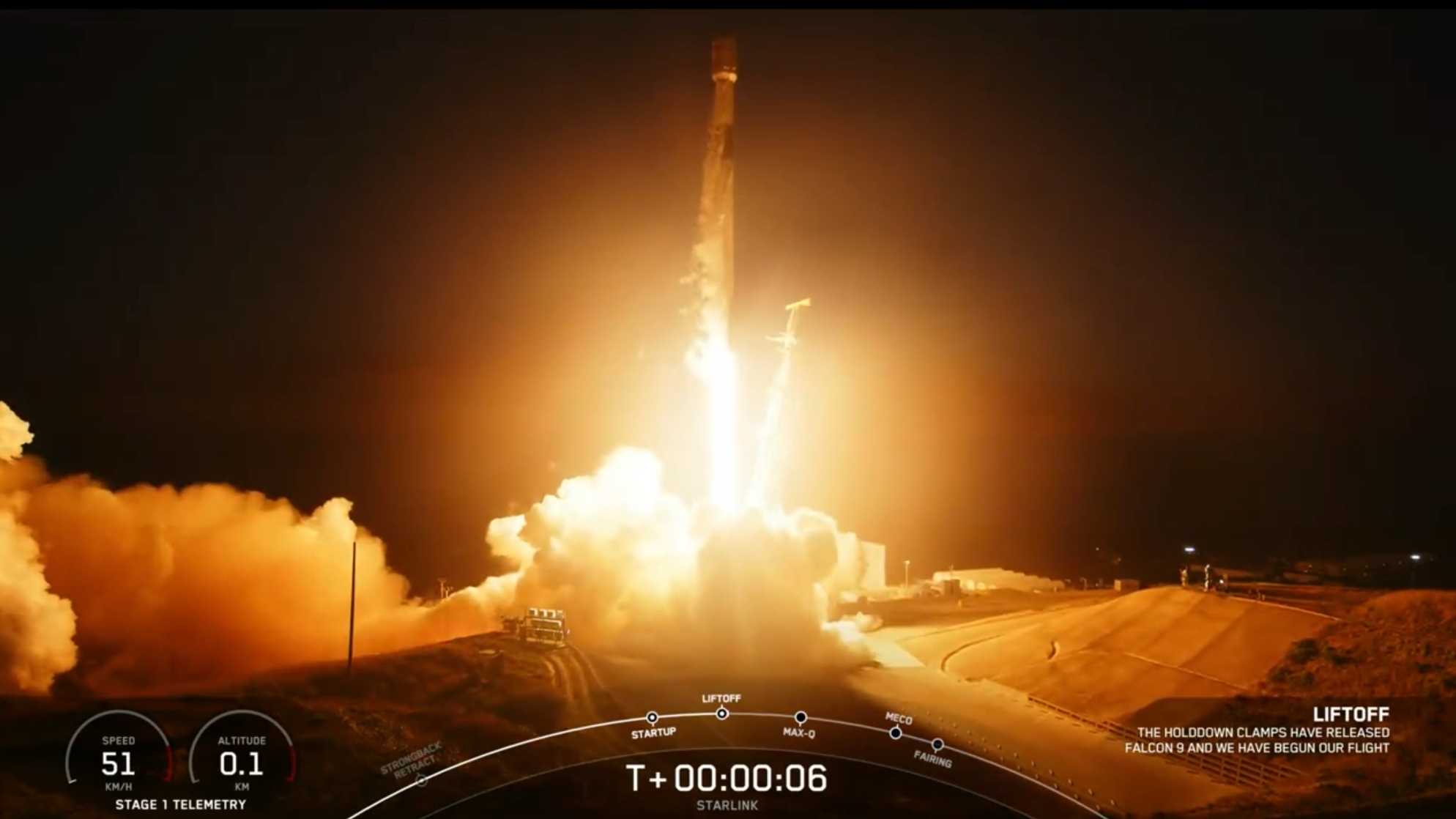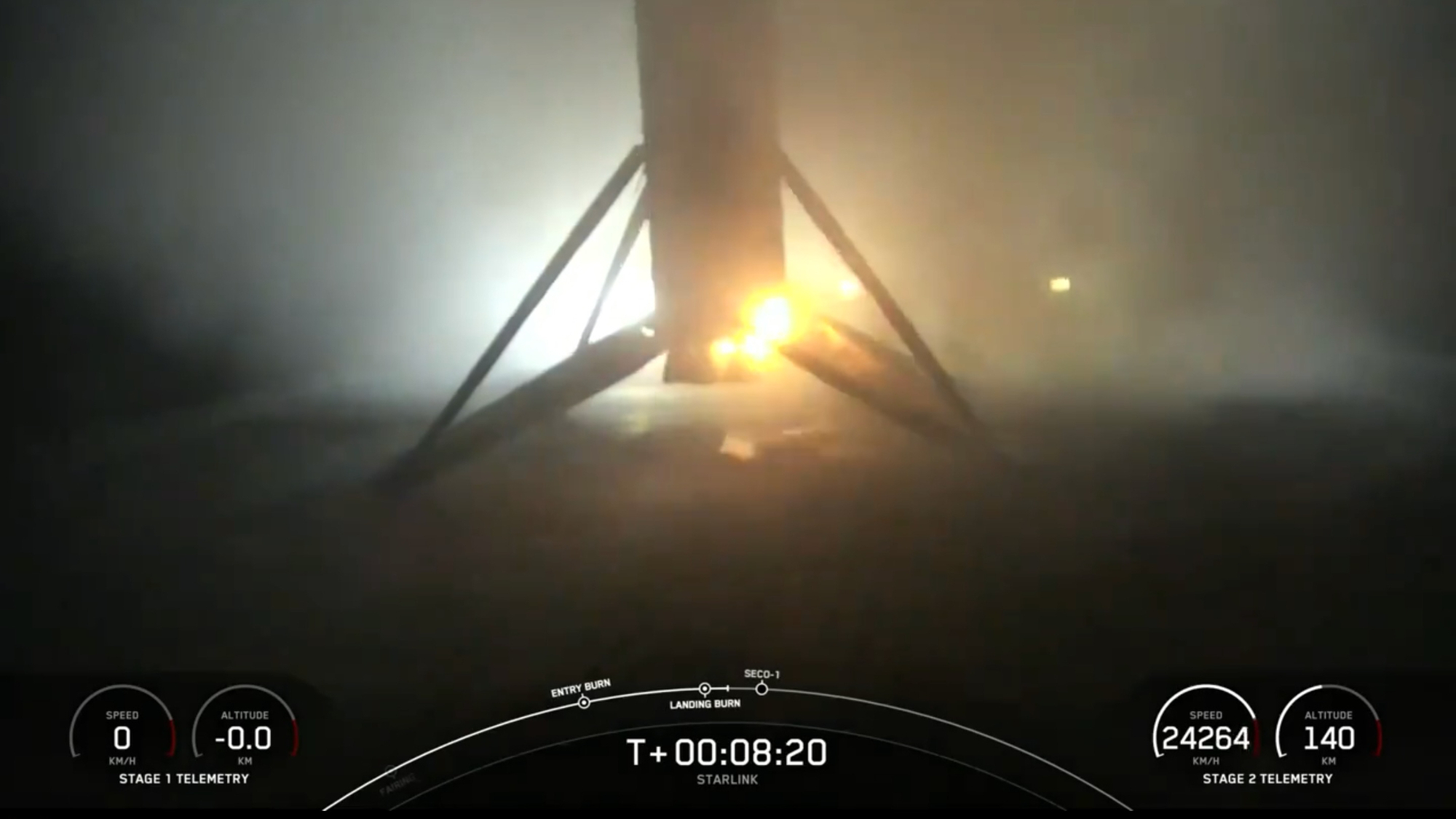SpaceX launches 20 Starlink satellites from California

SpaceX launched another batch of its Starlink broadband satellites from California on Tuesday night (June 18), ending a 10-day spaceflight drought for the company.
A Falcon 9 rocket topped with 20 Starlink spacecraft, including 13 with direct-to-cell capabilities, lifted off from Vandenberg Space Force Base on Tuesday at 11:40 p.m. EDT (8:40 p.m. local California time; 0040 GMT on June 19).
About 8.5 minutes later, the Falcon 9's first stage touched down on the SpaceX droneship Of Course I Still Love You, which was stationed in the Pacific Ocean.
It was the fifth launch and landing for this particular booster, according to a SpaceX mission description.
The Falcon 9's upper stage, meanwhile, continued hauling the 20 satellites toward low Earth orbit, where they're scheduled to be deployed about an hour after liftoff. The new batch will join more than 6,000 operational satellites in the Starlink megaconstellation.
Tuesday night's mission was the 61st orbital liftoff of the year for SpaceX but its first since June 8. That wouldn't qualify as a lull for any operator other than SpaceX, which is averaging one launch every 2.8 days so far in 2024.
The Starlink launch was supposed to be the second half of a spaceflight doubleheader for SpaceX on Tuesday. But the first leg, the launch of the Astra 1P telecom satellite for Luxembourg-based company SES, was called off due to high winds near the launch site, Cape Canaveral Space Force Station in Florida.
Breaking space news, the latest updates on rocket launches, skywatching events and more!

Michael Wall is a Senior Space Writer with Space.com and joined the team in 2010. He primarily covers exoplanets, spaceflight and military space, but has been known to dabble in the space art beat. His book about the search for alien life, "Out There," was published on Nov. 13, 2018. Before becoming a science writer, Michael worked as a herpetologist and wildlife biologist. He has a Ph.D. in evolutionary biology from the University of Sydney, Australia, a bachelor's degree from the University of Arizona, and a graduate certificate in science writing from the University of California, Santa Cruz. To find out what his latest project is, you can follow Michael on Twitter.

